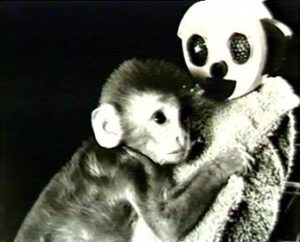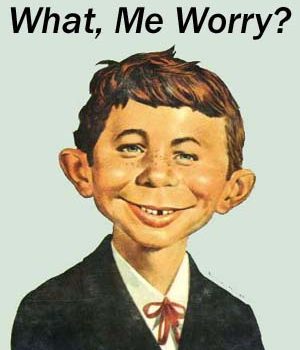So to date, I have not seen a sea turtle present with symptoms of panic attacks (or social anxiety, eating disorder, body dysmorphic disorder etc.). So why is that you may ask? My reasoning is simple. As discussed in the previous post, turtles are born with all they require for survival, thus they are not dependent on their parents. An attachment theorist would hypothesize that therefore there can be no threats to attachment formation since such bonds are of no bio-evolutionary significance to a sea turtle. This is altogether different for humans. Further, it is the contention of this book, that via basic principles and operations of conditioning and learning, cues associated with actual or perceived threats to attachment can play a critical role in the development of a variety of psychiatric symptoms (along with bio-genetic predispositions and vulnerabilities).
Anybody who took a class in Introductory psychology may recall a reference to Harry Harlow, the brilliant psychological researcher who worked with Rhesus macaques. What is often not made clear in such classes, is the full significance of his contribution. Basically, what he showed, is that baby monkeys who were raised by wire mesh mothers who provided milk, preferred to go to the terry cloth covered mothers for security and nurturance, even though the terry cloth mother surrogates did not provide milk. The implications of this are huge. From a learning theory perspective, what this means is that “love”, nurturance, and security, represents a primary drive state, independent of feeding and other appetitive drives in contrast to what had been previously thought. Security and nurturance were previously seen as secondary drives as a result of being associated with feeding. So this means that nurturance is an unconditioned stimulus or UCS in behavioral learning terms. This means that it has the power, through processes of conditioning and associative learning to propel behaviors in response to cues which have been associated with this UCS.
So, OK, here is a scenario, extracted from the book, which I present to my doctoral student trainees: It’s a beautiful summer day, puffy white clouds are floating across the sky. You have been playing with matches in the yard directly behind your house. Suddenly, the screen door busts open, and your father, visibly enraged, rushes towards you with a belt strap menacing raised over his head to strike you as he hollers, “How many times have I told you never to play with matches?” He strikes your legs several times with the belt. What are the critical cues in this scene? What is the learning that takes place. How might this influence a young developing person? Thoughts, comments are welcome!






